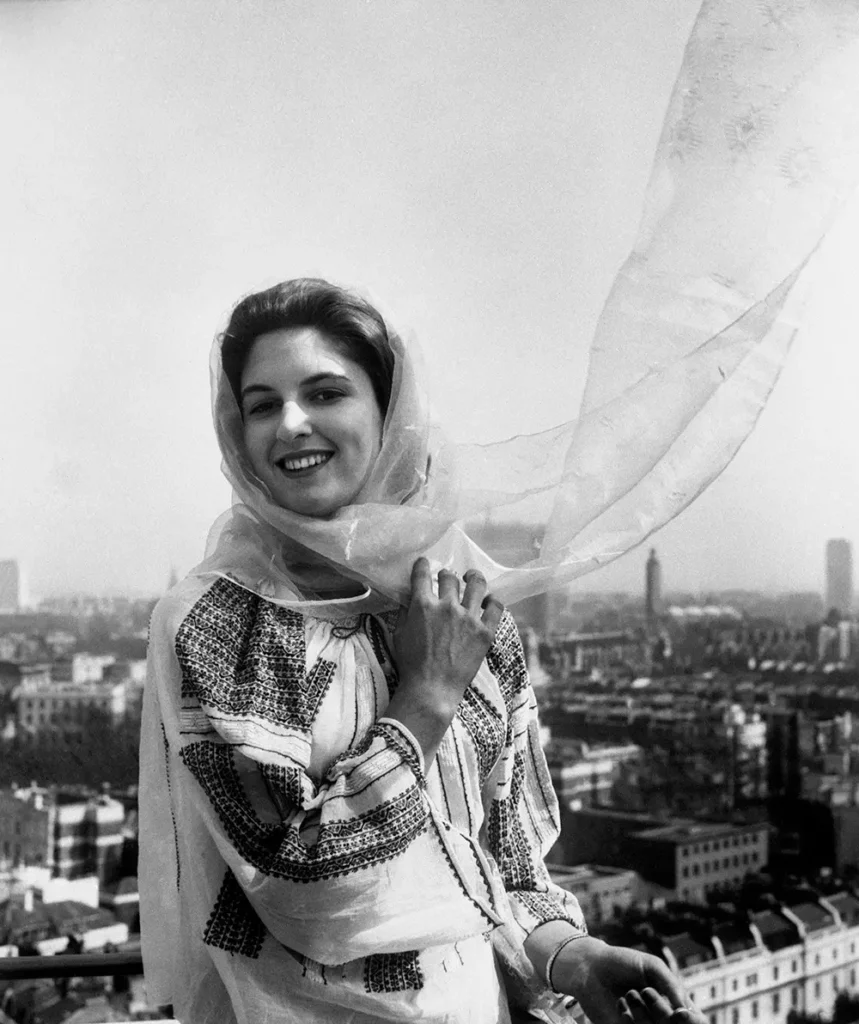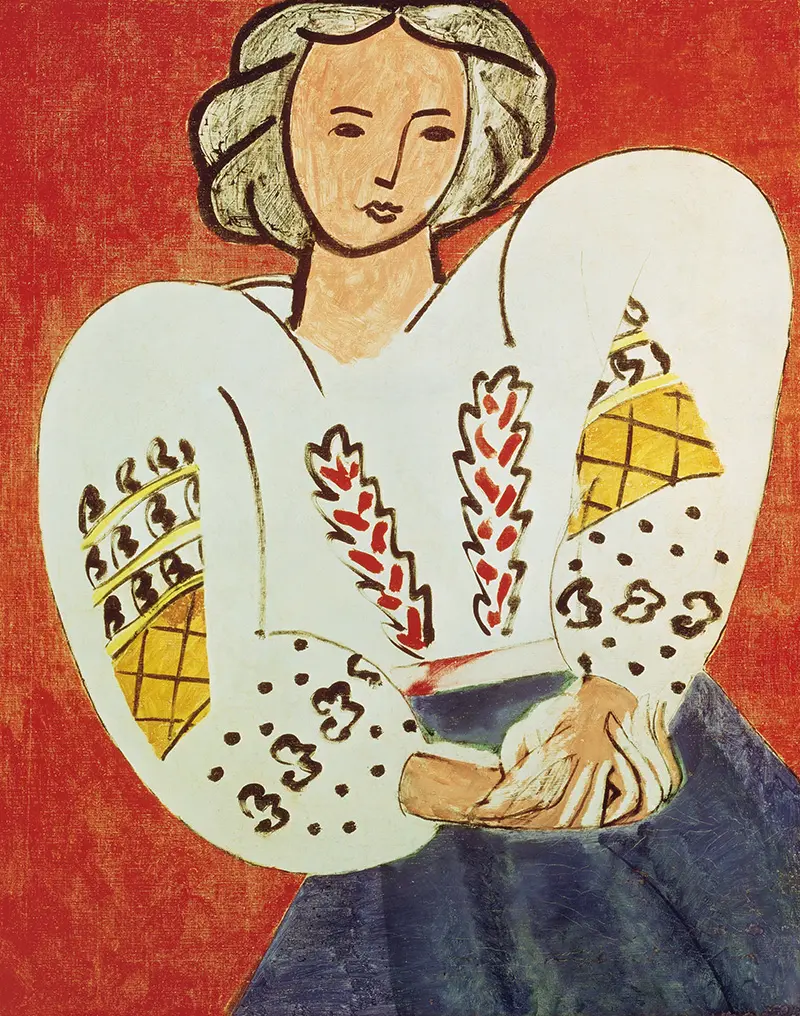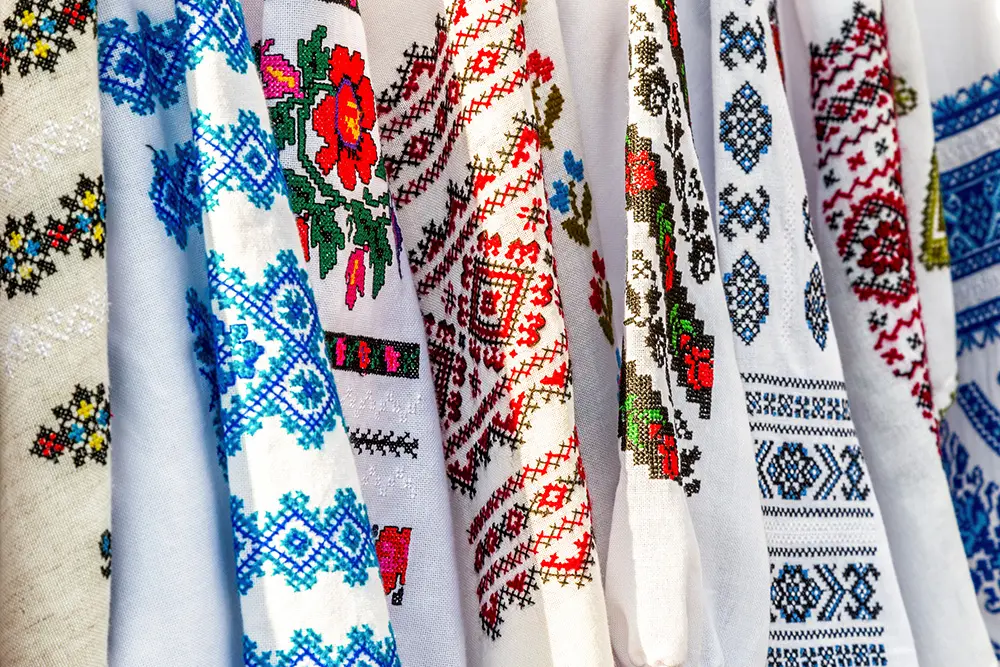Ie is more than a piece of clothing, it is a canvas for the human soul. Traditionally, each piece was handcrafted by skilled women. Made out of flax, hemp, and cotton, crafting the ie was more than a process of putting together various elements to create clothes. It was a social event where women would gather together, twist wool, sing, and share the hardships and joys of daily life during the so-called șezătoare (lt. tr. the sitting, local gathering during which women would talk, sing and prepare the materials for the ie). Therefore, the Romanian blouse one wears can carry behind more than labor and delicate artisanship; it can carry the laughter, the tears, and the memories of the women present at șezătoare.
Ie patterns: more than design
The patterns present on the ie stand for more than just design. The colors used were chosen to determine one’s marital status. Girls and young ladies would wear yellow and orange, while newly wedded women would wear red. Blue was reserved for mothers, and dark navy and black for widows and older women. The intricate patterns are not just patterns either. The most often encountered element is the spiral, symbolizing eternity, and concepts such as time and space, but it was also believed to symbolize the synergy between men and women.



Besides flowers and other geometrical patterns representing the human connection with nature, the cross was also one of the most predominantly used embroideries, as it symbolized faith in God. The Christian heritage of the Romanian culture is strongly incorporated into the national elements, and ie is no exception. Another important fact that defines the original traditional blouse and showcases the belief in Divinity is seen in the process of making the Romanian blouse. Village women believed that perfection does not belong to the human race but to God, which is why an authentic ie would often have the appearance of an unfinished piece of clothing, as it was intentionally left unconcluded.
Traditional Romanian embroidery
We, Romanians, wear our hearts upon our sleeves – and we do so quite literally. The traditional ie is believed to protect the woman who wears it from harm. Ie embraces you in a feeling of belonging, and it acts almost as a business card, showing to the world your ambitions and social status, and it does that by the means of the altiță – the specific and unique embroidery on the shoulder. There are no two altiță that look the same, much in the same way there are no two identical people on this earth. It also portrays emotions with the help of the garment, whether that means happiness, sadness, hope, or distress. The Romanian ie can carry it all in its embroideries and stitching.
Throughout the years, the motifs of the ie, its particularities and patterns, changed from region to region as a result of economic and social developments. But as much as the ie represents an element of Romanian diversity, it also stands as an element of unity and authenticity. Patterns may vary, and techniques may differ, but all throughout the Romanian land, crafting women remembered to stay true to the origins of the ie, preserving the color of the fabric: white. On this blank, pure canvas, one would create, with every punch of the needle, not just a beautifully crafted piece of traditional clothing but a one-of-a-kind tale of its owner, which was to express their beliefs for years to come.







